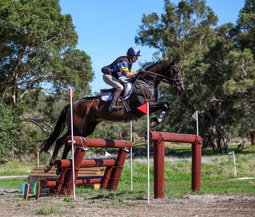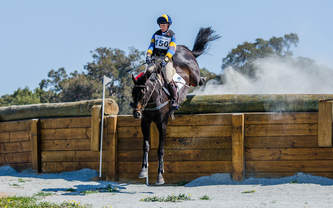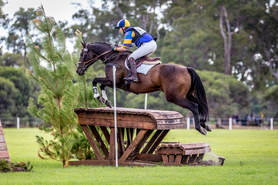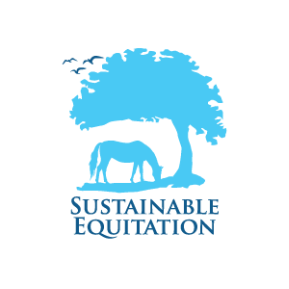
What makes a rider want to pull up when things are not going well, rather than just press on and see what happens? Is it the knowledge of falls before them? Perhaps having experienced a bad fall previously? The knowledge of their horse not being quite fit enough or a lurking injury? Or perhaps they are frightened that an official will accuse them of abuse or dangerous riding. I guarantee you former Event Riders’ Association (ERA) president Francis Whittington’s decision to pull up Easy Target at the huntsman’s close during the cross-country at Badminton Horse Trials in 2014 while in a very competitive position was based on an understanding of his horse and the sport. He was aware that his horse was tiring, and that continuing on a tired horse would increase the risks of falls and injuries. He didn’t do it because he was scared of an official or a rule. He didn’t do it for fun or publicity. He did it through horsemanship and common sense, despite the potential pay cheque, or Olympic berth, had he continued without fault. That was the best piece of horsemanship I’ve seen in a long time.

As riders, it is our job to select our horse, train ourselves and our horses, study each and every cross-country course and learn from everything and everyone we can. We need to spend at least as much time working on cross-country as dressage and we need to select cross-country horses, not dressage or showjumping horses. We need to think of dressage as part of the training program we have put in place to help us with our jumping and cross-country. We should look at dressage as an all-encompassing way of training that is there to help condition the horse. Not just to ride the movements.
As riders we should be fully aware of the impact our decisions make on our safety, and the safety and welfare of our horse. Yet, as riders, we continue to look to others to make our sport safer - to make those decisions for us.
When a traffic light turns green, do you just take off, driving blindly in to the intersection, or do you look left and right first to check the way is clear? I look both ways before I go. Because it doesn’t matter if it was someone else’s fault or not when I’m dead. That’s the kind of personal responsibility we need at the top level. Once riders get there, they need to have some self-awareness and self-preservation. We can’t keep clamouring for the sport to change. Riders who don’t pay attention will keep finding ways to fall.

Danny Warrington is an advanced event rider and professional trainer, based in Maryland, USA. He was married to international rider Amanda Warrington, who died in an eventing accident in 1997. In his words “She made a mistake; I made a mistake; but the sport didn’t make a mistake.”
Every sports psychologist, coach, mentor or competitor will be quick to cite goals as a key ingredient to success in sport. But sometimes, by pushing so hard to achieve goals, we can push right past the safe point. In Danny Warrington’s case, his wife pushed so hard to make the US team that he reports “she died in the process. It’s horrible and it’s tragic, but it wasn’t the sport’s fault. Nobody made her run the horse. We sat at home and tried to figure out how to make the horse go better, instead of saying to each other: ‘Maybe this isn’t an advanced horse. Maybe he’s good at intermediate level.’” Danny bravely used this example to help open the eyes of riders around the globe, encouraging them not to be so goal oriented that they forget to look at life until it is too late.
Danny Warrington’s advice to people is that sometimes it’s better to go home and come back another day. Sometimes it’s better to look at your horse and say, “You know what, buddy, I love you, but maybe the four-star, or the three-star or even the two-star level is above you,” and not push your horse or yourself past the point you can do. It’s your first job to take care of yourself and your horse. If you don’t like that particular course, don’t run. If you think questions aren’t fair, speak up. Yet most people don’t do that.
A recent report by Australian researcher Denzil O’Brien identified 59 rider deaths in eventing since 1993. It sounds like a big number but there is still so little known about each fall. What type of fence, what gear was the horse ridden in, what were the training methods behind the combination, were there any underlying soundness issues? We need to start harvesting this information or we can apply as many more rules as we like – at the end of the day we are still blind.
As riders I think we should take on a much greater responsibility for ours and our horse’s safety. As riders we need to be quicker to criticise and modify our training techniques, quicker to recognise the possibility of unsafe fences, quicker to turn to science and braver to speak up. As riders we have to make more of an effort to completely understand cross-country riding, to study how biomechanics work and how horses learn, and evaluate what impact the gadgets and methods currently (and frequently) used are affecting the natural ability of the horse.
As riders we are the ones putting ourselves in physical danger every time we leave the start box. It’s not the event officials. It’s us. As riders WE need to take responsibility for ours and our horse’s safety and to speak up when questions are asked. I'm not suggesting you ask the course designer to take out the keyhole or the double of apexes because you don't like keyholes or apexes, I'm talking about making educated decisions and not attempting questions that you know do not make sense to horses, or questions that your horse hasn’t been trained for.
As riders we have a responsibility to the horses, to the current generation of riders and to the younger generation of riders.
Don’t push when you shouldn’t push. There’s a day to go home, and there’s a day to fight again.
We don’t have to change the sport. We have to change the way the sport is being played.

 RSS Feed
RSS Feed
